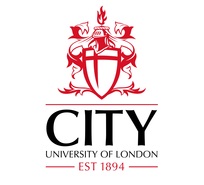
Étude de la méthode d’usinage thermique des rotors à vis des compresseurs monovis.
Study on screw rotor thermal machining method of single screw compressor.
Numéro : A2-201
Auteurs : WANG S. Y., WANG Z. L., SHI H. W., WANG Z. M., HAO M. M., WANG J.
Résumé
Single screw compressor (SSC) is a type of rotary compressor with excellent performance. However, under high temperature conditions, the hot deformation of the screw rotor and the star wheel cause the change of the gap of the meshing pairs, which seriously degrades the compressor performance. In order to solve the problem of the gap variation of the meshing pairs, a new hot-state machining method is proposed to study the deformation characteristics of the screw rotor in the hot-state machining process, which provides some reference data for the pre-deformation of the rotor in the machining process. Numerical calculation model of thermal machining process for screw rotor was established by using finite element method. With the validated model, the deformation characteristics in the process of hot working were studied by changing the number of heating holes, diameter of heating holes and temperature of heating holes. Results show that screw rotor deformation will increase with the increase of heat source temperature and diameter, and the deformation distribution of the screw rotor is not significantly affected by the heat source temperature and diameter, but will be more uniform with the increase of heat source quantity. The research work in this paper can provide theoretical basis for hot machining of screw rotor for SSC.
Documents disponibles
Format PDF
Pages : 10
Disponible
Gratuit
Détails
- Titre original : Study on screw rotor thermal machining method of single screw compressor.
- Identifiant de la fiche : 30028737
- Langues : Anglais
- Sujet : Technologie
- Source : 12th International Conference on Compressors and their Systems
- Date d'édition : 09/2021
- Document disponible en consultation à la bibliothèque du siège de l'IIF uniquement.
Liens
Voir d'autres communications du même compte rendu (63)
Voir le compte rendu de la conférence
Indexation
- Thèmes : Compresseurs
- Mots-clés : Compresseur à vis; Modélisation; Haute température; Pompe à chaleur; Géometrie; Déformation
-
Development of an industrial high temperature h...
- Auteurs : HE Y., YANG D., CAO F., et al.
- Date : 14/07/2014
- Langues : Anglais
- Source : 2014 Purdue Conferences. 15th International Refrigeration and Air-Conditioning Conference at Purdue.
- Formats : PDF
Voir la fiche
-
Modeling and simulation of oil-free liquid-inje...
- Auteurs : AHRENS M. U., TONSBERG E. K., TOLSTOREBROV I., HAFNER A., EIKEVIK T. M.
- Date : 13/06/2022
- Langues : Anglais
- Source : 15th IIR-Gustav Lorentzen Conference on Natural Refrigerants (GL2022). Proceedings. Trondheim, Norway, June 13-15th 2022.
- Formats : PDF
Voir la fiche
-
Modelling approach for a liquid-injected ammoni...
- Auteurs : AHRENS M., TONSBERG E., TOLSTOREBROV I., HAFNER A., EIKEVIK T.
- Date : 13/01/2021
- Langues : Anglais
- Source : 10th IIR Conference on Compressors and Refrigerants.
- Formats : PDF
Voir la fiche
-
Optimization analysis on the performance of a v...
- Auteurs : LIU S., LU Y., WU Y., et al.
- Date : 24/08/2019
- Langues : Anglais
- Source : Proceedings of the 25th IIR International Congress of Refrigeration: Montréal , Canada, August 24-30, 2019.
- Formats : PDF
Voir la fiche
-
Development of twin-screw steam compressor with...
- Auteurs : HU B., CAI H., WU D., LIANG J., WANG R. Z.
- Date : 15/07/2022
- Langues : Anglais
- Source : 2022 Purdue Conferences. 26th International Compressor Engineering Conference at Purdue.
- Formats : PDF
Voir la fiche
